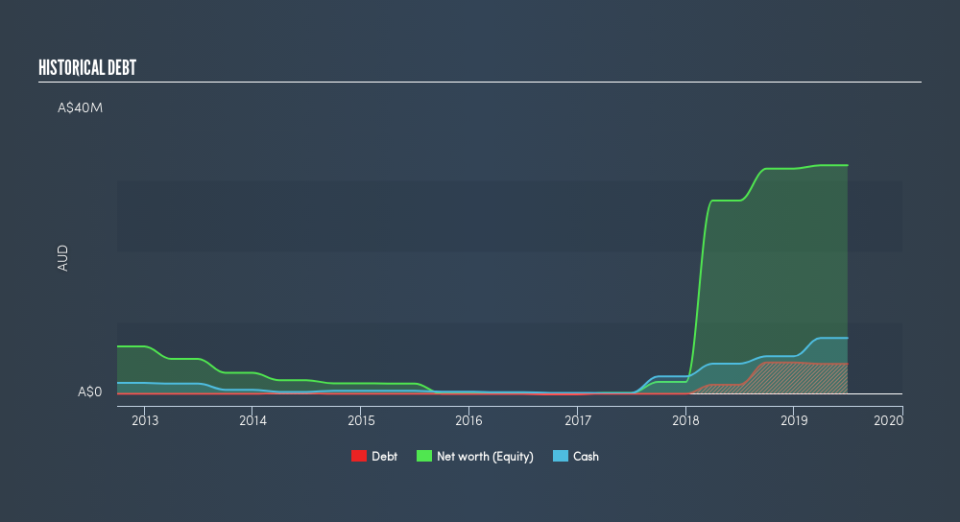We Think Jatenergy (ASX:JAT) Is Taking Some Risk With Its Debt

Some say volatility, rather than debt, is the best way to think about risk as an investor, but Warren Buffett famously said that 'Volatility is far from synonymous with risk.' When we think about how risky a company is, we always like to look at its use of debt, since debt overload can lead to ruin. We note that Jatenergy Limited (ASX:JAT) does have debt on its balance sheet. But the more important question is: how much risk is that debt creating?
Why Does Debt Bring Risk?
Generally speaking, debt only becomes a real problem when a company can't easily pay it off, either by raising capital or with its own cash flow. In the worst case scenario, a company can go bankrupt if it cannot pay its creditors. However, a more common (but still painful) scenario is that it has to raise new equity capital at a low price, thus permanently diluting shareholders. Of course, the upside of debt is that it often represents cheap capital, especially when it replaces dilution in a company with the ability to reinvest at high rates of return. When we examine debt levels, we first consider both cash and debt levels, together.
See our latest analysis for Jatenergy
What Is Jatenergy's Debt?
The image below, which you can click on for greater detail, shows that at June 2019 Jatenergy had debt of AU$4.20m, up from AU$1.27m in one year. However, its balance sheet shows it holds AU$7.84m in cash, so it actually has AU$3.64m net cash.
How Strong Is Jatenergy's Balance Sheet?
The latest balance sheet data shows that Jatenergy had liabilities of AU$9.02m due within a year, and liabilities of AU$3.56m falling due after that. On the other hand, it had cash of AU$7.84m and AU$1.75m worth of receivables due within a year. So it has liabilities totalling AU$2.98m more than its cash and near-term receivables, combined.
Of course, Jatenergy has a market capitalization of AU$47.1m, so these liabilities are probably manageable. But there are sufficient liabilities that we would certainly recommend shareholders continue to monitor the balance sheet, going forward. Despite its noteworthy liabilities, Jatenergy boasts net cash, so it's fair to say it does not have a heavy debt load!
Notably, Jatenergy made a loss at the EBIT level, last year, but improved that to positive EBIT of AU$805k in the last twelve months. The balance sheet is clearly the area to focus on when you are analysing debt. But you can't view debt in total isolation; since Jatenergy will need earnings to service that debt. So if you're keen to discover more about its earnings, it might be worth checking out this graph of its long term earnings trend.
But our final consideration is also important, because a company cannot pay debt with paper profits; it needs cold hard cash. Jatenergy may have net cash on the balance sheet, but it is still interesting to look at how well the business converts its earnings before interest and tax (EBIT) to free cash flow, because that will influence both its need for, and its capacity to manage debt. Over the last year, Jatenergy saw substantial negative free cash flow, in total. While that may be a result of expenditure for growth, it does make the debt far more risky.
Summing up
We could understand if investors are concerned about Jatenergy's liabilities, but we can be reassured by the fact it has has net cash of AU$3.6m. So while Jatenergy does not have a great balance sheet, it's certainly not too bad. While Jatenergy didn't make a statutory profit in the last year, its positive EBIT suggests that profitability might not be far away.Click here to see if its earnings are heading in the right direction, over the medium term.
If, after all that, you're more interested in a fast growing company with a rock-solid balance sheet, then check out our list of net cash growth stocks without delay.
We aim to bring you long-term focused research analysis driven by fundamental data. Note that our analysis may not factor in the latest price-sensitive company announcements or qualitative material.
If you spot an error that warrants correction, please contact the editor at editorial-team@simplywallst.com. This article by Simply Wall St is general in nature. It does not constitute a recommendation to buy or sell any stock, and does not take account of your objectives, or your financial situation. Simply Wall St has no position in the stocks mentioned. Thank you for reading.

 Yahoo Finance
Yahoo Finance 
